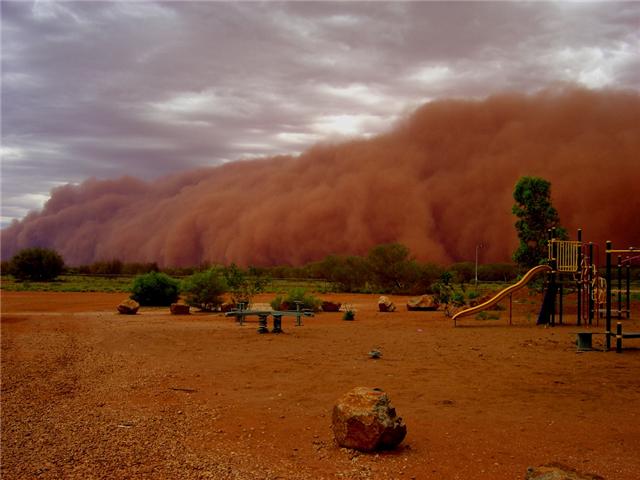Dust Storms And Gardens: How To Protect Plants From Desert Storms


Plant damage can stem from a variety of sources. These may be environmental, cultural, mechanical, or chemical. Sand storms in the desert wreak some of the most severe havoc on your garden. Desert garden protection methods can help prevent the damage that drying wind, scorching sun, and scouring sand can cause on tender plant leaves, roots, and trunks. Learning how to protect plants from desert storms can minimize the symptoms of storm exposure and help keep your plant healthy.
Damage from Sand Storms in the Desert
Deserts aren't the only place plants can become exposed to extreme arid wind storms, but the combination of the sand and the gusty weather scrub plant leaves and dry out the entire tissue. The symptoms noticed are leaf scorch, torn foliage, seedlings ripped out by their roots, dropped leaves or cactus pads, and other physical injury. A desert dust storm swirls scratchy dry soil and sand around the area, leaving behind plants that look like they have been in a blender. Much of the damage will be topical but the drying effect can seriously and adversely harm the tissues of the plant. Additionally, rain often follows a big storm and the sudden moisture will soften the soil and may topple trees.
Dust Storms and Gardens
Protection of plants in dry areas prone to wind and dust storms starts with proper plant choices. Choose native plants that have adapted to the common desert dust storm. They can more easily withstand such conditions since they have had centuries of time to adjust and modify in order to thrive in these challenging circumstances. Use your home or other outbuildings to shelter tender plants and trees. Watch the area for trends in wind exposure and populate the most badly affected regions of the garden with hardy natives.
How to Protect Plants from Desert Storms
Drying winds cause much of the damage to plants, which can be persistent if the plant doesn't get water naturally. It is best to give plants a big drink after a storm to restore moisture to the soil and allow the plant to recoup its moisture levels in the root and vascular system. Mulch is an effective way to help prevent severe moisture loss in the soil. Stone mulch helps reduce particulate damage to the root zone, but it doesn't allow water penetration as well as bark mulch. Sand storms in the desert are often unchallenged by large trees and edifices, allowing the damaging wind to tear across the sensitive species, strip any topsoil and dry out the land. Natural windbreaks are effective desert garden protection, while providing beauty to the landscape and personal barriers to your property.
Effective Planting for Dust Storms and Gardens
Always install new plants a few seasons before desert storm season so they have a chance to establish and anchor themselves. Provide water to tender plants on a regular basis so they have a wellspring to prevent damage from wind caused dryness. Install sensitive plants in containers on casters so you can move them to shelter when storms threaten. Use stakes, plant ties, and cages to help support weaker species. It is not always possible to save a mutilated or damaged plant, so choose wisely in your desert landscape. Pick plants for their sturdiness and hardiness in your zone.
Sign up for the Gardening Know How newsletter today and receive a free copy of our e-book "How to Grow Delicious Tomatoes".

Bonnie Grant is a professional landscaper with a Certification in Urban Gardening. She has been gardening and writing for 15 years. A former professional chef, she has a passion for edible landscaping.